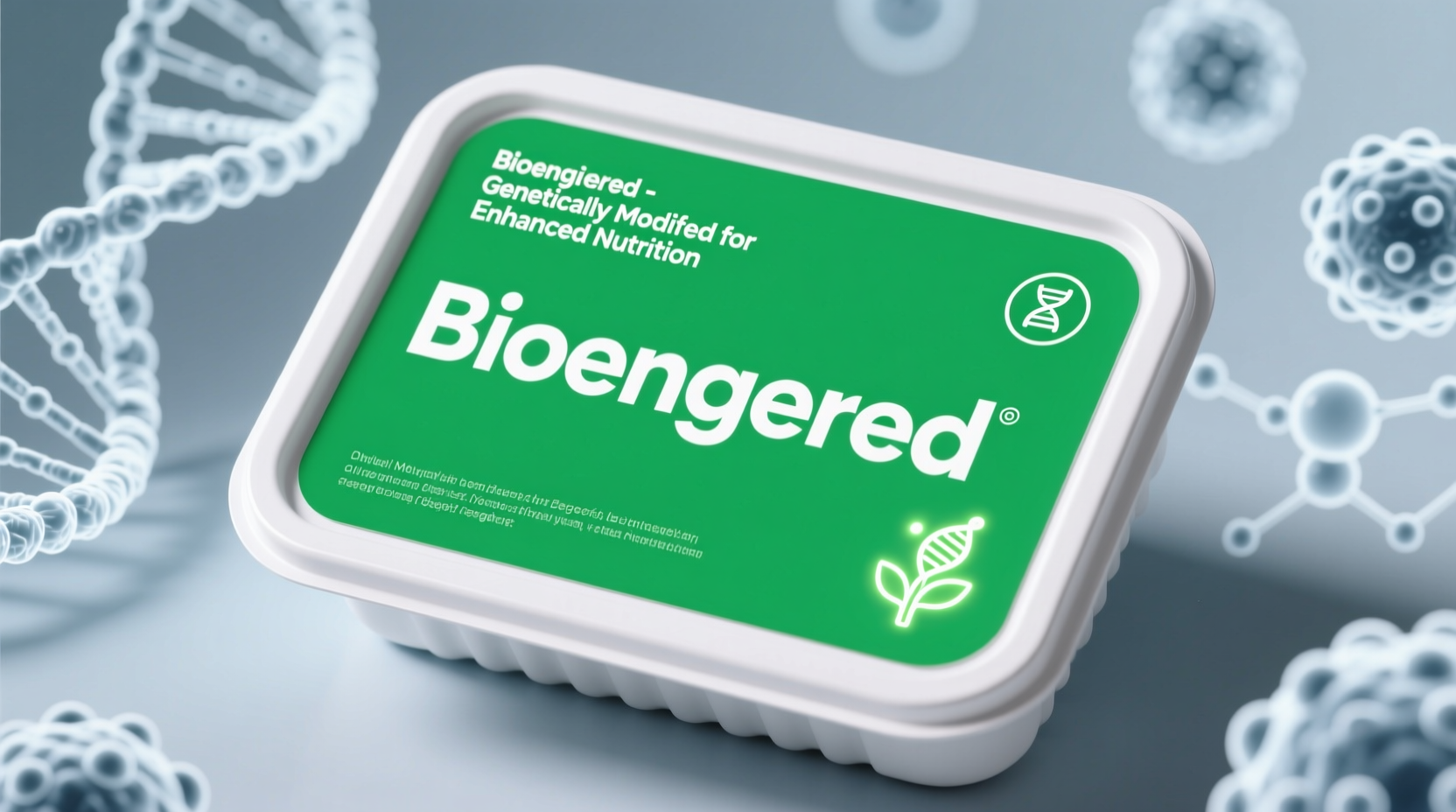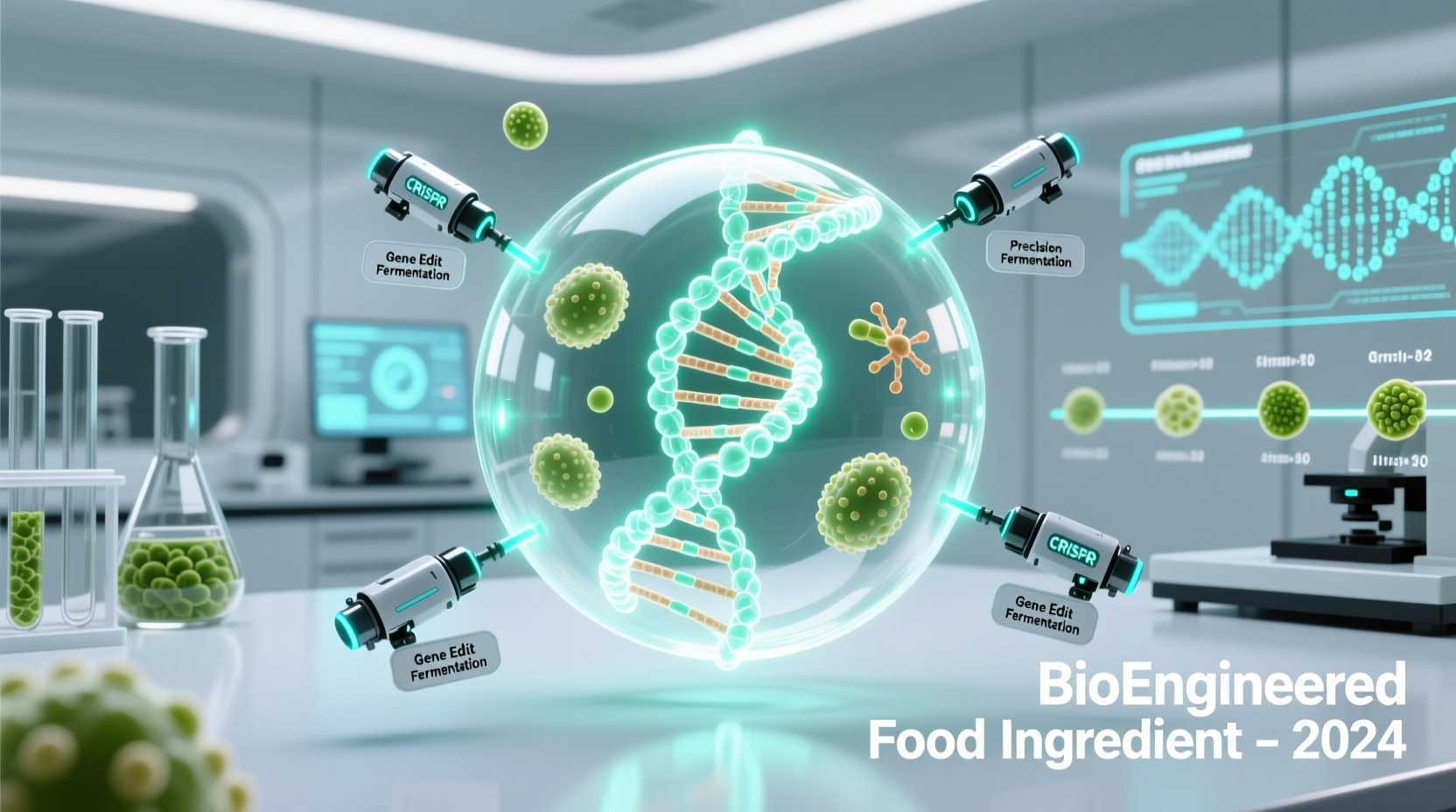Curious about what exactly makes a food ingredient "bioengineered" and how it affects your grocery shopping? You're not alone. With new labeling requirements taking effect, understanding bioengineered food ingredients has become essential for informed consumer choices. This guide cuts through the confusion with science-backed facts and clear explanations.
Understanding Bioengineered Ingredients: Beyond the Buzzwords
When you see "bioengineered" on a food label, it refers to ingredients created using precise genetic modification techniques. Unlike traditional genetic modification which might involve cross-breeding, bioengineering targets specific genes to achieve desired traits. The USDA defines these as foods containing "detectable modified genetic material" that was created using recombinant DNA techniques and "could not otherwise be obtained through conventional breeding or found in nature."
How Bioengineering Evolved: A Regulatory Timeline
The journey from laboratory to grocery shelf involves strict regulatory oversight. Here's how bioengineered food regulation developed in the United States:
| Year | Milestone | Significance |
|---|---|---|
| 1992 | FDA establishes policy for biotechnology-derived foods | Created initial regulatory framework treating GMOs similarly to conventional foods |
| 2016 | National Bioengineered Food Disclosure Law enacted | Mandated standardized labeling for bioengineered foods |
| 2018 | USDA develops National Bioengineered Food Disclosure Standard | Defined specific requirements for labeling and disclosure |
| January 2022 | Full compliance required for most manufacturers | Established current labeling requirements consumers see today |
Bioengineered vs. GMO: Clearing the Confusion
Many consumers use "GMO" and "bioengineered" interchangeably, but there are important distinctions:
| Characteristic | Bioengineered Foods | Traditional GMOs |
|---|---|---|
| Definition | Foods with detectable modified genetic material created through recombinant DNA | Broad term for any genetically modified organism |
| Regulatory Scope | Narrower definition focused on specific molecular techniques | Broad category including various modification methods |
| Labeling Requirement | Mandatory disclosure under USDA standard | No specific federal labeling requirement |
| Examples | Non-browning Arctic apples, soybean oil from genetically modified soybeans | Most conventional corn and soy varieties developed since 1990s |
Where Bioengineered Ingredients Actually Appear
Despite common misconceptions, bioengineered ingredients represent a small portion of the food supply. The USDA's disclosure standard applies only to foods containing detectable modified genetic material, creating important context boundaries:
- Common applications: Certain varieties of soybeans, corn, canola, sugar beets, papaya, and summer squash
- Rare in final products: Highly refined oils and sugars often contain no detectable modified material, exempting them from labeling
- Not in organic products: USDA organic certification prohibits bioengineered ingredients
- Exempt categories: Foods served in restaurants, very small food manufacturers, and certain processed foods without detectable genetic material

Current Labeling Requirements You Should Know
Since January 2022, the USDA requires food manufacturers to disclose bioengineered ingredients through:
- Text disclosure: "Bioengineered food" or "Contains a bioengineered food ingredient"
- USDA Bioengineered Food symbol (the "BE" butterfly logo)
- Electronic/digital link (like a QR code) with clear instructions
- Text message disclosure option
Importantly, the standard includes specific exemptions. Foods where no modified genetic material can be detected don't require labeling, which explains why many products containing corn syrup or soybean oil lack the disclosure despite originating from bioengineered crops.
Scientific Consensus and Safety Assessment
Major scientific organizations worldwide have evaluated the safety of bioengineered foods. According to the National Academies of Sciences, Engineering, and Medicine, after reviewing over 1,000 studies:
"Genetically engineered crops are just as safe to eat as their non-GE counterparts. There is no substantiated evidence of a difference in risks to human health between current commercially available genetically engineered (GE) crops and conventionally bred crops."
Each bioengineered food ingredient undergoes rigorous safety assessment by the FDA before market entry, evaluating potential allergens, toxicity, and nutritional composition. The FDA maintains that bioengineered foods meeting safety standards are as safe as conventional foods.
Consumer Perspectives on Bioengineered Foods
Public sentiment toward bioengineered ingredients shows interesting patterns according to recent research:
- 78% of consumers support mandatory labeling for transparency, regardless of safety concerns
- Only 32% actively avoid bioengineered foods when shopping
- 65% express confusion about the difference between "GMO" and "bioengineered" terms
- Younger consumers (18-34) show greater acceptance of bioengineered ingredients for specific benefits like reduced food waste
This sentiment summary, based on USDA Economic Research Service data, reveals that while consumers want transparency through labeling, safety concerns have decreased as understanding has improved.
Practical Shopping Guidance for Consumers
When navigating bioengineered food labels, keep these practical tips in mind:
- Check for the official disclosure - Look for the text statement or USDA BE symbol
- Understand exemptions - Highly refined products like oils often don't require labeling
- Read beyond the label - "Non-GMO" claims don't necessarily mean the product is organic or more nutritious
- Consider the context - Bioengineered ingredients in processed foods differ from whole bioengineered produce like certain apples or potatoes
For those seeking to avoid bioengineered ingredients completely, choosing USDA certified organic products remains the most reliable approach, as organic standards prohibit their use.
The Future of Bioengineered Food Ingredients
Emerging applications show how bioengineering could address food system challenges:
- Non-browning mushrooms that reduce food waste
- Rice varieties with enhanced nutrient profiles to combat malnutrition
- Disease-resistant crops requiring fewer pesticides
- Plant-based alternatives with improved nutritional profiles
As these technologies evolve, expect more precise labeling and potentially new categories of bioengineered ingredients designed specifically for sustainability and nutrition benefits rather than just agricultural efficiency.











 浙公网安备
33010002000092号
浙公网安备
33010002000092号 浙B2-20120091-4
浙B2-20120091-4